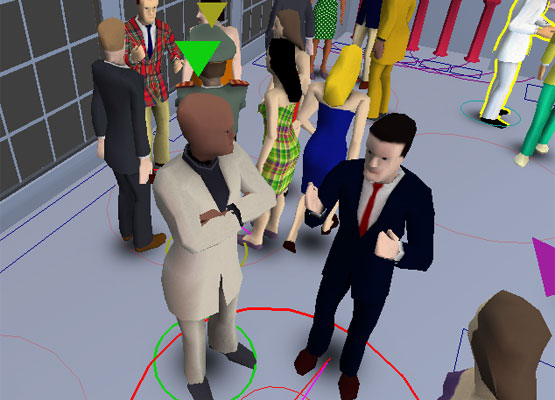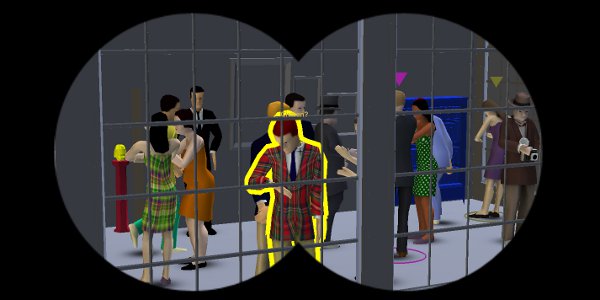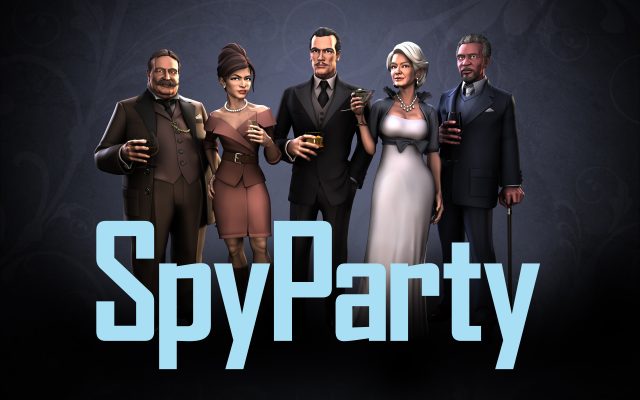 |
| Talking, patting people on the butt, moving statues around, etc. |
. . . or you are a sniper, attempting to shoot the spy (and only the spy).
 |
| Looking at his watch. Suspicious. |
The players aren't directly competing, but you will always have the other player's intentions and information (what you know about them, anyway) guiding your decisions. Did the sniper notice the statues got switched? Did the spy just signal the double agent, or was he faking it to confuse you? Does the sniper know all the little tells that give you away? The asymmetry makes the feeling of the game very different from other kinds of player-vs-player competition. As a spy, you are exposed and vulnerable; as a sniper, you are powerful but have a lot of pressure on you - when you pull the trigger, you win or lose the game. The variety in the missions and the ability to switch between the two roles help keep things from getting too repetitive.
I want to talk more about the asymmetry, though, because it's what's most interesting to me here. Lots of games are asymmetrical. Chess is mostly symmetrical, though one player starts first. Starcraft introduces some asymmetry, with players having different units and different responses to threats. This is one of the few multiplayer games with an asymmetry in goals, where players are competing for different things. What's interesting is that, in some ways, it's more like a single-player game than a multiplayer one. Lots of single-player games have asymmetry in them, obviously - Pac-Man is a simple example, since you want to eat the dots and the ghosts want to eat you. In some ways, it doesn't matter that your opponent is a human, since you're just trying to complete your own goal, and no one is directly competing with you. But the added element of human psychology makes the asymmetry unique - no computer could make the kinds of decisions - and mistakes - a human makes, and that knowledge is how a spy blends in and how a sniper perforates the ill-fitting guest. The game is so subtle, and the information transmitted so sparse and unreliable, that between two experienced players (this is a hypothetical game not involving me) it turns into quite the battle of wits. The conflict is personal, the experience is tense, and the game is quite different and fun from most multiplayer games, symmetrical or not. There's a lot more coming here, and what we've seen so far is very promising. I hope someday AIs can give us this kind of silly-yet-nailbiting psychological fun, but I still don't think we'll ever match the satisfaction of seeing the score screen at the end and knowing the other guy slipped up first.
Oh, and did I mention how slick the proposed art direction looks?
 |
| Pretty sure second-from-the-left is based on another, perhaps less wily spy. |
The beta is closed without donation (and even then it's limited), but rumors say that may change soon.
No comments:
Post a Comment